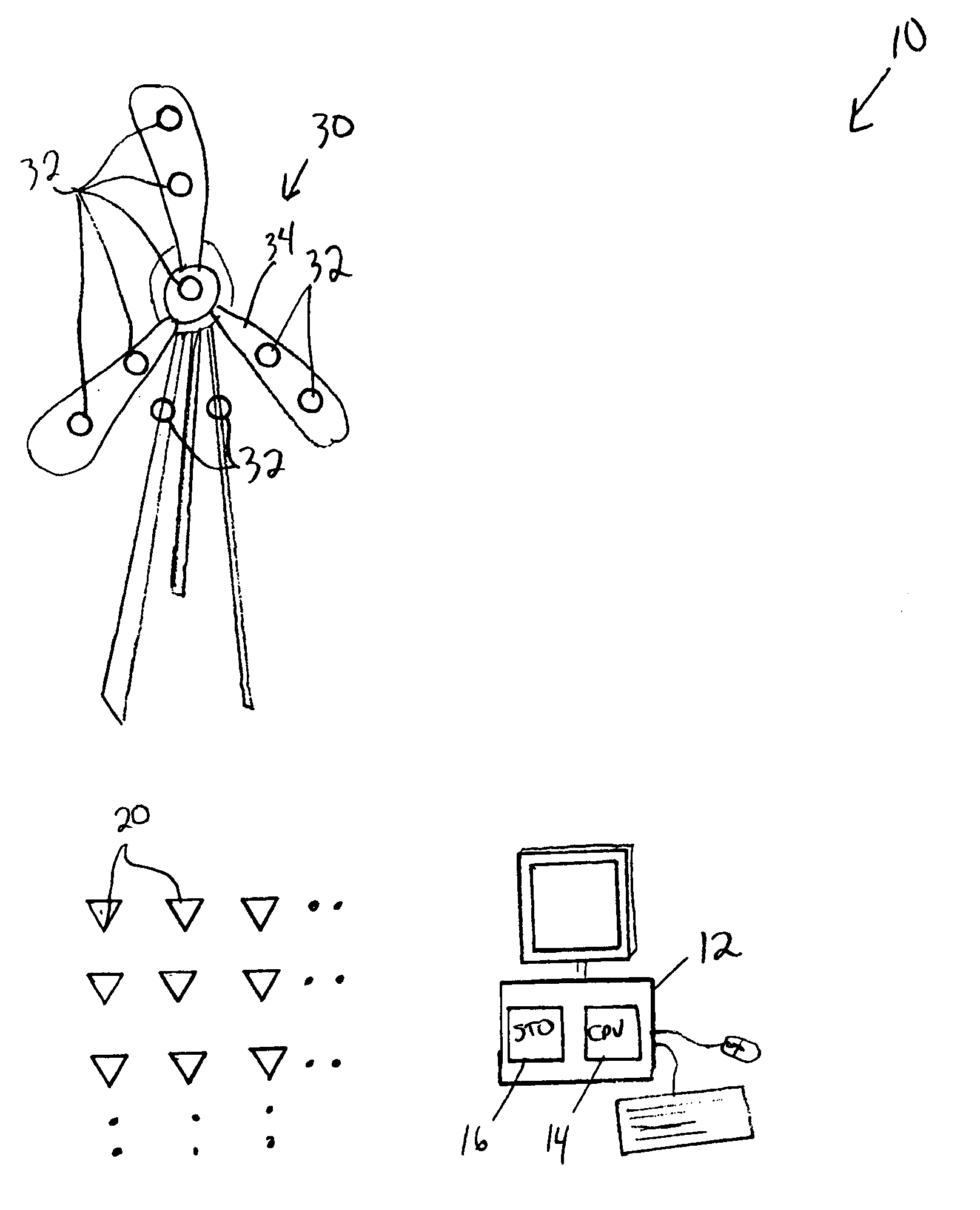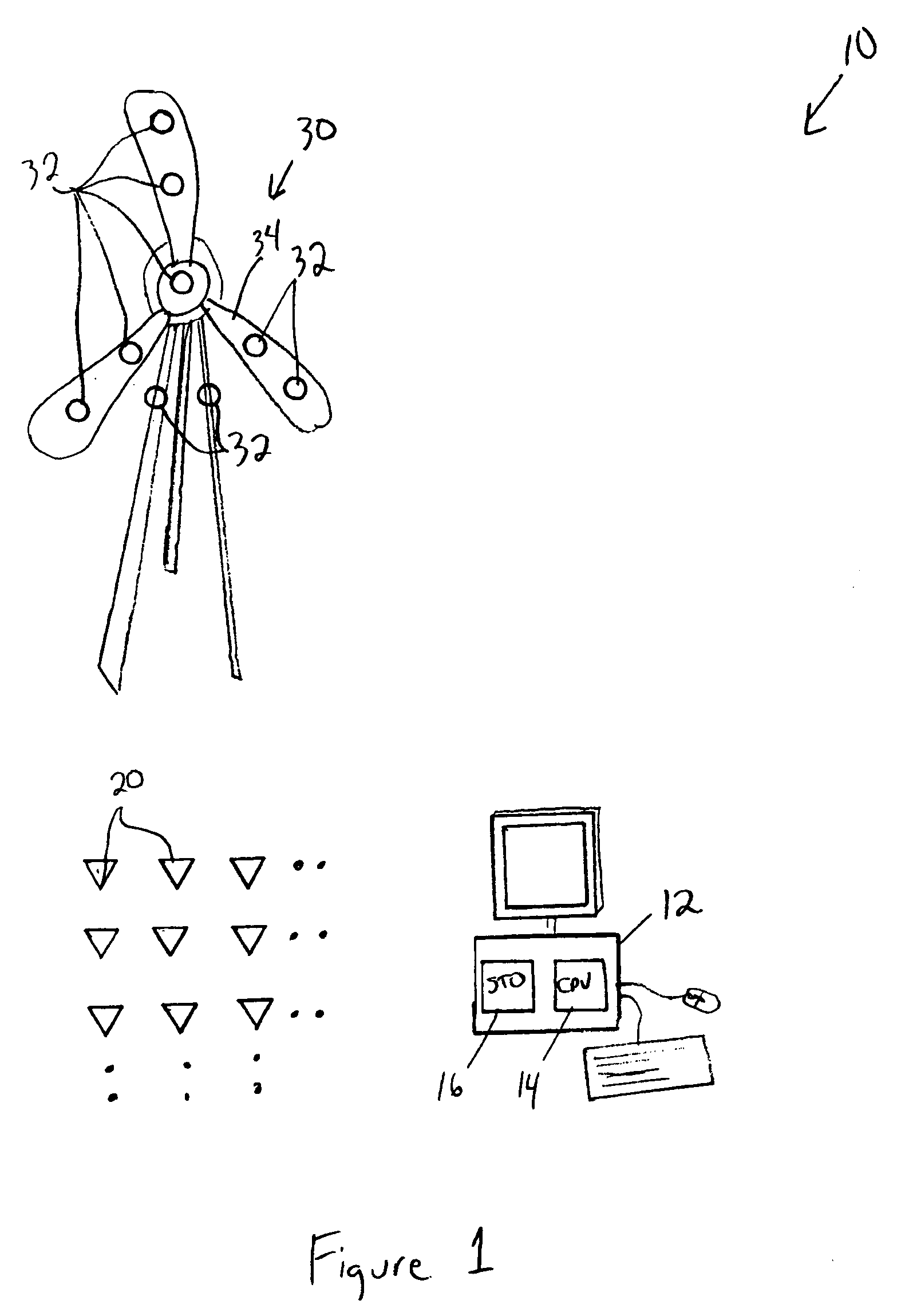Farfield analysis of noise sources
a farfield analysis and noise source technology, applied in the field of farfield analysis of noise sources, can solve the problems of not being able to fully damage the transducer, not being able to use the well-known nearfield acoustic holography (nah) and being near the sour
- Summary
- Abstract
- Description
- Claims
- Application Information
AI Technical Summary
Benefits of technology
Problems solved by technology
Method used
Image
Examples
Embodiment Construction
[0010] A noise diagnostic system 10 according to the present invention includes a computer 12 having a processor 14 and storage 16 including memory and mass storage, such as magnetic, electronic and / or optical storage. A plurality of transducers 20, such as microphones, measure sound pressure and send signals to the computer 12 indicating the sound pressure at the location of the transducers 20.
[0011] The noise diagnostic system 10 of the present invention uses a novel algorithm, described below as the “FANS algorithm,” to diagnose noise from a target source 30 whose dimensions, geometry and location are generally known but not necessarily precisely. The algorithm is stored in storage 16 and executed by the processor 14 in the computer 12. In the method according to the invention, a plurality of virtual noise sources 32 are defined on a surface 34 of the target source 30. In the noise diagnostic system 10, the virtual noise sources 32 are spherical wave sources.
[0012] FANS algorit...
PUM
 Login to View More
Login to View More Abstract
Description
Claims
Application Information
 Login to View More
Login to View More - R&D
- Intellectual Property
- Life Sciences
- Materials
- Tech Scout
- Unparalleled Data Quality
- Higher Quality Content
- 60% Fewer Hallucinations
Browse by: Latest US Patents, China's latest patents, Technical Efficacy Thesaurus, Application Domain, Technology Topic, Popular Technical Reports.
© 2025 PatSnap. All rights reserved.Legal|Privacy policy|Modern Slavery Act Transparency Statement|Sitemap|About US| Contact US: help@patsnap.com



